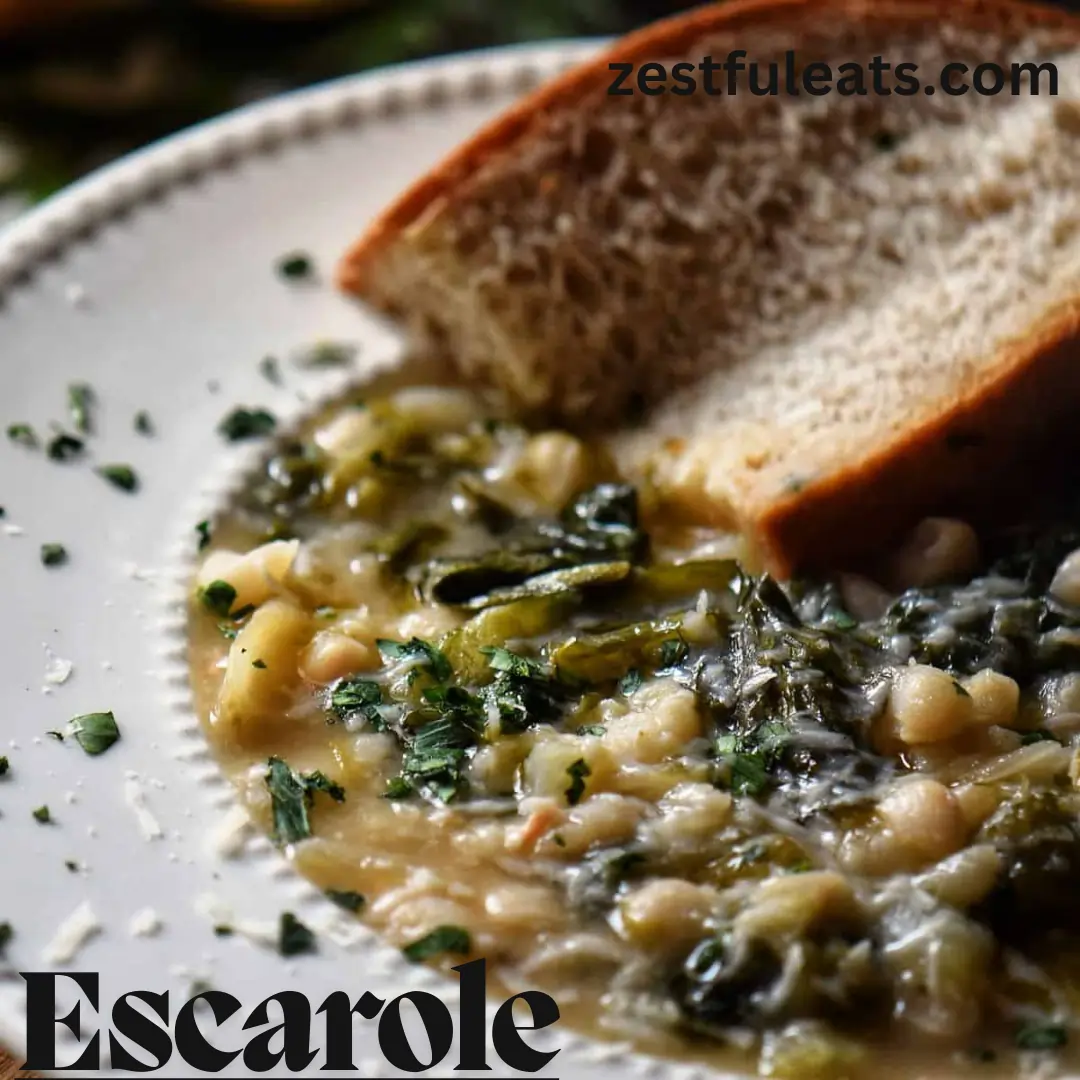INTRODUCTION
Escarole is a leafy green with a mild bitter taste that is perfect for both cooking and eating raw. It’s often used in famous Italian dishes such as pasta e fagioli and Italian Wedding Soup. While it looks similar to other greens like romaine or green leaf lettuce, escarole stands out because of its thick, hardy texture. Whether you find it in your local grocery store’s produce section or want to try something new in your meals, escarole is a great choice. Keep reading to learn how to make the most of this adaptable vegetable.

Escarole
Escarole is a type of leafy green vegetable in the chicory family, which also contains radicchio and endive. It features wide, green leaves and has a milder bitter taste compared to its relatives. This makes escarole a versatile choice in various dishes.
USE
Escarole is easy to prepare. Start by separating the leaves from the core and washing them to clean off any dirt from the stems. The inner leaves, which are lighter and more tender, are excellent in salads. If you like the taste of bitter greens, you might enjoy them as they are. However, if you find the bitterness too strong, try mixing them with a sweeter lettuce like romaine to soften the flavor without overpowering your dish. You can also use whole leaves as a substitute for lettuce in wraps.
For cooking, the darker, tougher outer leaves work best. Add chopped or torn escarole to soups towards the end of cooking to absorb flavors while retaining a firm texture. A bit of lemon juice or vinegar can counterbalance the natural bitterness. Escarole is also ideal for braising, roasting, or sautéing and complements braised meats and stews well. Cooking it longer makes it tender but without disintegrating like softer greens, and helps reduce its bitter taste.
NUTRITION
According to the USDA, a 3.5-cup serving of chopped escarole provides 18 calories and includes the following nutrients:
- Carbohydrates: 4 grams
- Fiber: 4 grams
- Sugars: 0 grams
- Protein: 1 gram
- Total Fat: 0 grams
- Saturated Fat: 0 grams
- Sodium: 24 milligrams
- Potassium: 318 milligrams
Escarole is rich in fiber and vitamin A, which supports bone growth, vision, immune function, hormone synthesis, and reproduction. Additionally, it contains kaempferol, a compound that not only gives escarole its bitter flavor but also has been linked to cancer prevention, as highlighted in a 2019 Oncology Research study.
SUBSTITUTE
If you can’t find escarole, there are several other greens that make good substitutes. For salads, try mixing arugula, curly endive, and radicchio. These greens blend well and can mimic the texture and flavor profile of escarole. For cooking in soups and stews, dandelion greens and young mustard greens are excellent alternatives. They provide a similar flavor and withstand cooking well. For dishes that require hearty greens, consider chard or kale. Keep in mind that these are less bitter and may need longer cooking times to become tender.
FAQS
What are some nutritional benefits of escarole?
Escarole is rich in vitamin A, which is known to help lower the risk of osteoporosis and cancer. It also contains a significant amount of vitamin K, essential for blood clotting.
What does escarole taste like?
Escarole offers a fresh, vegetal flavor with a mild bitterness, which is less intense compared to other chicories. The bitterness varies within the plant, with the inner, lighter leaves tasting sweeter than the outer, darker ones. Its flavor becomes brighter when raw and mellows out upon cooking.
Should escarole be eaten raw or cooked?
The juicy, crunchy white middle ribs and the inner, lighter green leaves of escarole have a bittersweet flavor, making them ideal for raw dishes. The outer, darker green leaves are more bitter and tougher, so they are better suited for cooking.
How can escarole be used in cooking?
Escarole’s thick leaves with ragged edges, ranging from light green on the outside to pale yellow inside, are versatile. It can be enjoyed raw in salads, braised in soups—often paired with white beans and sausage—or grilled to add a smoky flavor.
What are the health benefits of escarole?
Escarole is nutritionally valuable, containing copper which supports bone health, connective tissue maintenance, and the formation of red blood cells. Additionally, it provides Vitamin D, essential for metabolism and the production of both red and white blood cells.
